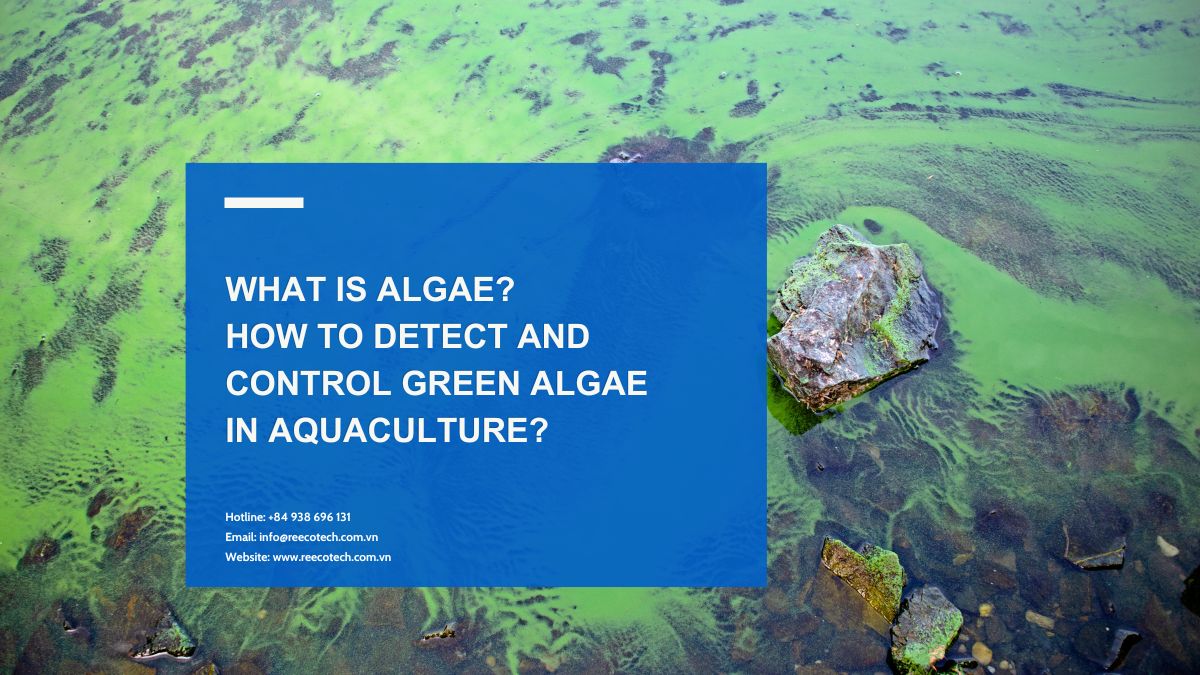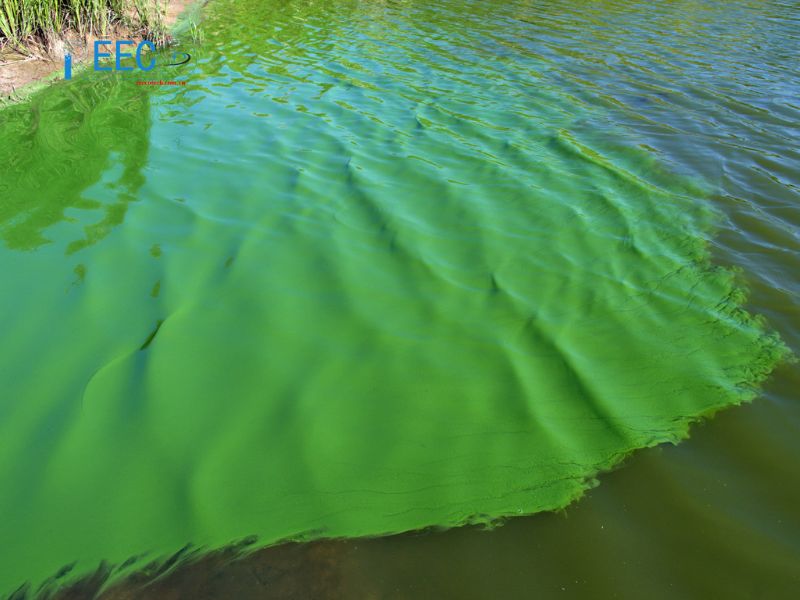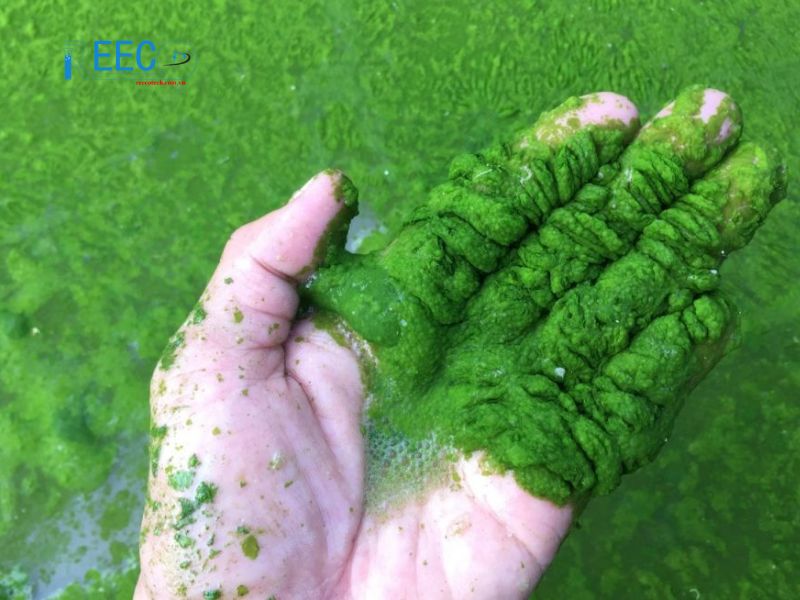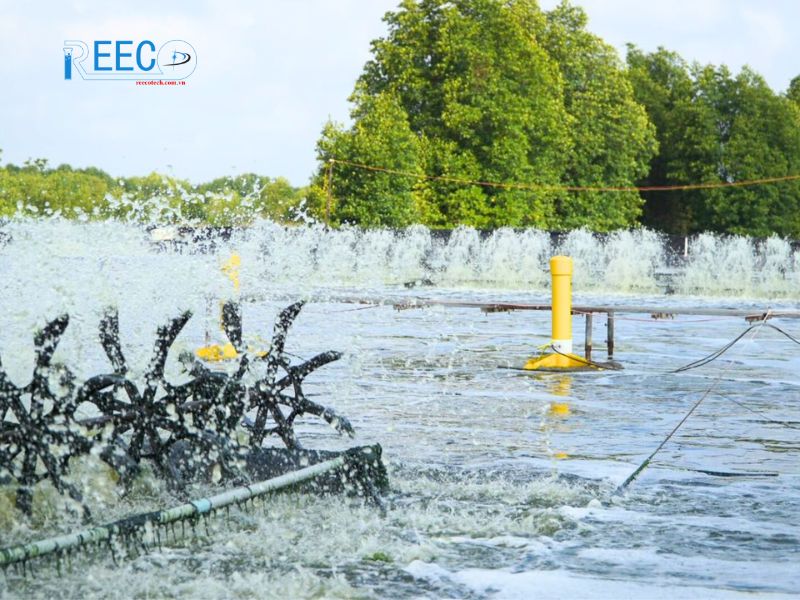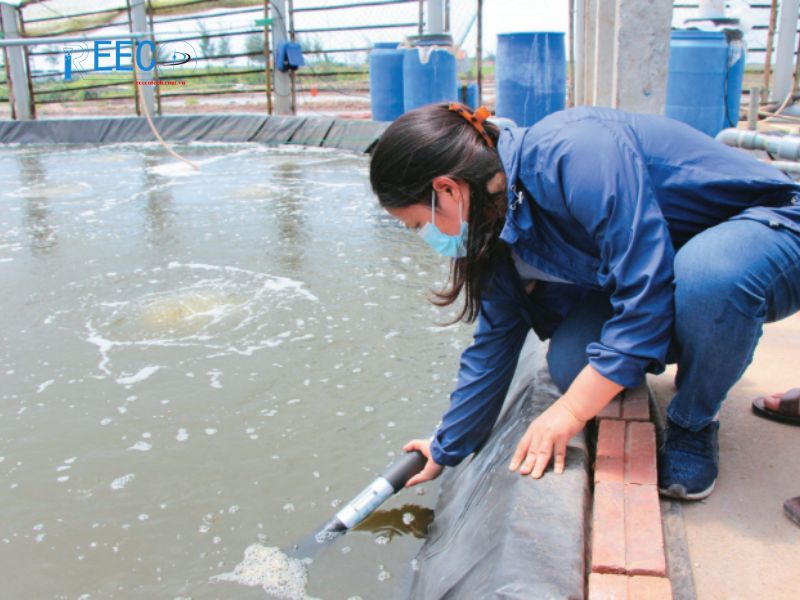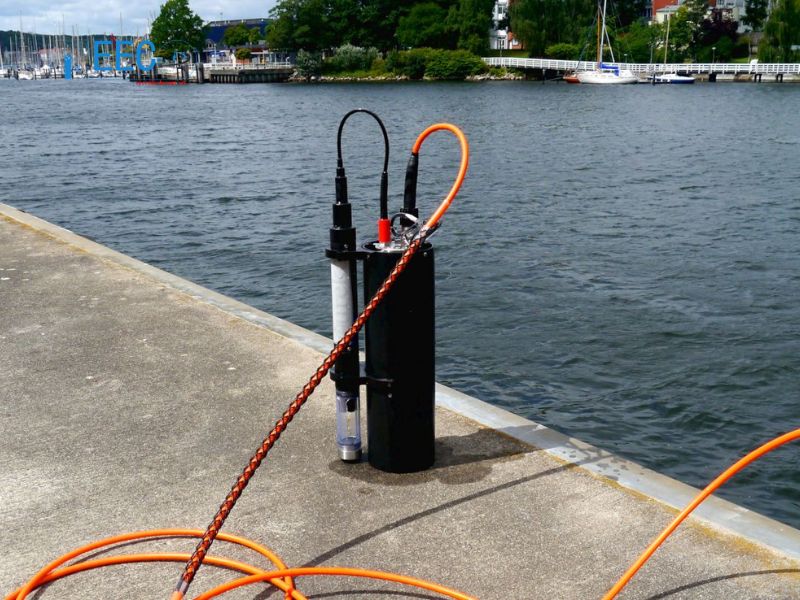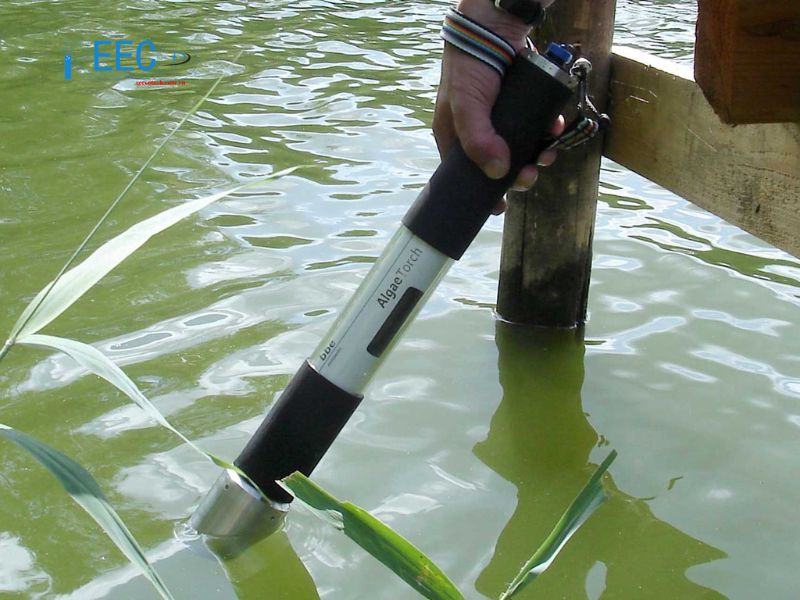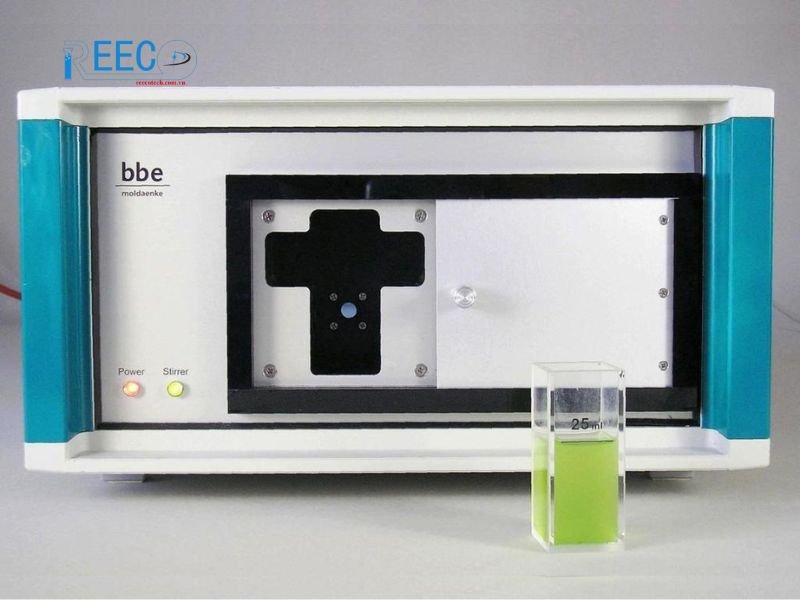What is green algae?
There is often confusion about what green algae or cyanobacteria actually are. In concept, green algae or cyanobacteria are the names given to a group of plants formed due to stagnant water sources with excess nutrients over a prolonged period. These algae have the ability to photosynthesize, but their growth rate is relatively slow, so they cannot be easily detected with the naked eye when they form. After a period of growth and proliferation, the water in the pond will turn blue-green and emit a peculiar odor.
In longstanding aquaculture ponds, feed is continuously supplied according to a cycle that farmers cannot accurately assess in terms of shrimp or fish consumption rates. Inadvertently, excess feed becomes a suitable environment for the formation and growth of green algae, especially in warm weather conditions.
See more: Temperature and Conductivity Sensors
Causes of Green Algae in Aquaculture
Green algae, a type of harmful algae, can cause various detrimental effects in aquaculture ponds. The reasons for the appearance of green algae in aquaculture can include:
- Excess nutrients: Green algae require nutrients to grow, particularly nitrogen (N) and phosphorus (P). In aquaculture ponds, these nutrients can come from excess feed, shrimp feces, fertilizer, domestic waste, etc.
- Light: Green algae require light for photosynthesis. During sunny seasons, an abundance of sunlight reaching the pond creates favorable conditions for green algae growth.
- Temperature: Green algae thrive at temperatures between 25-35 degrees Celsius.
- Depth of the pond: Green algae proliferate in ponds with depths less than 1 meter.
- Pond characteristics: Aquaculture ponds with abundant weeds, thick sediment at the bottom, etc., provide favorable conditions for green algae growth.
Impact of Green Algae on Shrimp Aquaculture Ponds
Green algae, a type of harmful algae, can cause various detrimental effects in shrimp aquaculture ponds. The impact of green algae on shrimp aquaculture ponds can include:
- Oxygen depletion: Excessive growth of green algae forms a thick layer on the water surface, hindering the diffusion of oxygen from the atmosphere into the water. Additionally, decomposition of green algae consumes a large amount of oxygen in the water, leading to oxygen depletion for the cultured shrimp.
- Disease transmission: Green algae can release harmful toxins that affect shrimp, leading to diseases such as white feces disease, hepatopancreatic necrosis syndrome, etc.
- Foul odor in the water: Decomposition of green algae produces foul-smelling odors, affecting the surrounding environment and water quality.
- Impact on human health: The presence of algae attached to shrimp bodies can affect human health if inadvertently consumed.
Ways to Limit Green Algae in Aquaculture
To address the growth of green algae in shrimp ponds, you need to implement several methods such as controlling the water source, monitoring feed quantities, and maintaining water quality. If algae levels in the pond increase, you should take measures to address them. Choose an appropriate time to carry out this task.
Controlling Water Source with Handheld Water Quality Testing Devices
To ensure the quality of the water source for aquaculture, especially for shrimp and fish, you need to conduct tests and evaluate various parameters such as pH, salinity, dissolved oxygen levels, etc.
Use a pH meter to assess the water pH in the aquaculture pond every 15 days to ensure that the water source is not acidic, which can lead to the death of aquatic species. If the water pH is too high, it creates a favorable environment for algae growth.
Utilize a salinity meter to check the water salinity every 7 days to ensure that the aquaculture water is maintained properly, without negatively impacting the cultivation process. High salinity levels can lead to the death of cultured organisms, thereby providing a conducive environment for microbial growth. This method allows you to control the shrimp’s living environment and monitor water quality for optimal growth. It not only helps aquaculturists control water quality but also serves as a simple yet effective method to control green algae in ponds.
Use an oxygen meter or dissolved oxygen meter to ensure that the oxygen level in the aquaculture pond is sufficient for the healthy growth of cultured organisms, limiting the impact of green algae in the water.
Controlling Daily Feed Amount
As mentioned above, excess feed in aquaculture ponds is a necessary factor to promote shrimp growth. Therefore, it’s essential to provide an adequate amount of feed to avoid waste and adverse effects on the aquatic environment.
If an excessive amount of feed is detected in the water, it may be necessary to replace the water or introduce non-harmful fish species to consume the excess feed. Eliminating green algae in shrimp aquaculture ponds will ensure sufficient feed for the shrimp and maintain a clean and safe water environment for them.
Maintaining the Aquaculture Water Source
To prevent the growth of green algae in shrimp ponds, you need to ensure a sufficient and circulating water source while limiting stagnant conditions.
If your aquaculture pond is heavily contaminated with algae, you can address the green algae by completely replacing the water (although this may be difficult for large farms) two to three times to remove the green algae from the pond.
Algae Quantification Monitoring Devices at Reecotech
Quantitative Analysis Device for Benthic Algae – BenthoTorch
The BenthoTorch is a rapid analysis device for benthic algae (living on the bottom) on substrates such as sediment, rocks, etc., in situ and at the time of survey (real-time). The analysis principle is based on the natural chlorophyll fluorescence spectrum of algal cells. Therefore, the measurement yields immediate results, taking only about 20 seconds, without the need for sample preparation. This method has many advantages, such as determining the quantity of each algae group, no time-consuming sample collection or preparation, and no use of chemicals during analysis.
Device for Measuring Total Algae and Cyanobacteria Levels on-site – AlgaeTorch
The AlgaeTorch is a compact, lightweight on-site device used to measure the total amount of algae and cyanobacteria levels in water environments (cyanobacteria, commonly known for producing toxins such as MICROCYSTIN*).
Algae analysis is conducted by measuring the fluorescence spectrum of algae chlorophyll, providing immediate results in about 20 seconds, without the need for sample preparation. This method offers numerous advantages, surpassing wet chemical analysis methods.
Online Quantification Device for Algae Groups – AlgaeOnlineAnalyser
The AlgaeOnlineAnalyser is a continuous monitoring and quantification device for algae group composition, suitable for installation at environmental monitoring stations, aquaculture farms, and water source monitoring sites.
The measurement follows the standard wet chemical analysis of chlorophyll (DIN/ISO). Unlike time-consuming sample preparation and counting methods, the in vivo fluorescence measurement method determines chlorophyll content quickly, directly in the natural living environment.
Device for Analyzing and Quantifying Various Algae Groups – AlgaeLabAnalyser
The AlgaeLabAnalyser device determines the total algae amount, photosynthetic activity of algae, and quantifies the distribution of different algae groups in water environments.
Algae analysis is conducted using direct fluorescence spectrum measurement method, eliminating the need for sample preparation as required by conventional chlorophyll analysis methods (no sample preparation, no solvent – chemical consumption). The analysis time is approximately 3 minutes per sample. The analysis results are equivalent to HPLC methods and other chemical analysis methods.
To monitor and control water quality, you can utilize the devices available at Reecotech. We are a company with many years of experience in importing and distributing genuine products and measurement equipment from renowned brands such as bbe Moldaenke GmbH, Hiden, etc.
Contact Reecotech now for the most specific advice and quotation.

